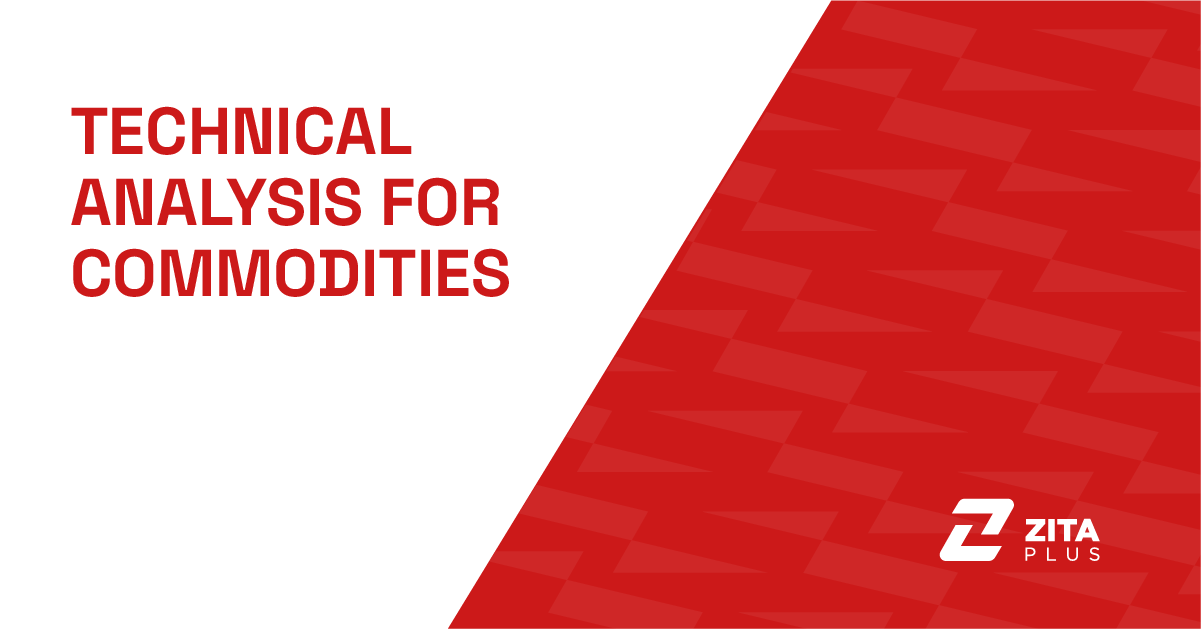
Commodity trading is quite different than trading stocks or forex. Since there are many price shifts that can happen suddenly, there's high volatility. That’s why many traders also rely on technical analysis. It can provide a clear view of the current situation in the market. This way, they can manage risk when markets get unpredictable.
Commodity prices are driven by factors such as droughts, geopolitical risks, and OPEC decisions. Charts can help traders answer the question of when to act. Reading the charts and analyzing price behavior allows traders to decide when to enter or exit the market with better precision.
In this article, we will break down how to use technical analysis specifically for commodities. We’ll cover which indicators work best for different assets such as gold, oil, agricultural products, and industrial metals. Also, we’ll include real-world examples to show how these tools help traders make decisions.
cta
Commodity markets are quite volatile. Prices can move fast due to factors such as supply chain disruptions, weather events, or shifts in global demand. Fundamental analysis explains why prices move, but technical analysis focuses on when and how to act on those moves.
Each commodity has a different behavior. That’s why a technical approach is inevitable for traders. Each market has its own price patterns, volatility profile, and reaction to global events.
Gold often moves on emotion, central bank policy, inflation fears, and global crises push it around. It can trend for long periods but also experience sudden reversals during news events.
Helpful Indicators for Gold:
In 2011, gold reached over $1,900 per ounce during the crisis. The RSI signaled overbought conditions well before the price corrected sharply, and eventually stabilized near $1,200 in the following years. Traders who paid attention to those signals caught the reversal early, while latecomers watched gold fall back.
Oil reacts to OPEC headlines, supply cuts, and inventory reports. It’s one of the most news-sensitive markets out there.
Recommended Indicators for Oil:
In early 2020, oil prices fell down during the COVID-19 demand shock. Prices broke below the lower Bollinger Band, and ATR spiked. This occasion highlighted extreme volatility. These signals helped traders prepare for larger price swings.
Since grain markets follow the seasons, the technical approach is pretty straightforward. What drives the prices of agricultural commodities are planting, weather, and harvest cycles.
Recommended Indicators for Agriculture:
In 2012, a severe drought in the U.S. Midwest tumbled the corn prices. Prices returned to normal after the supply shock passed. Traders used seasonality patterns combined with stochastic signals. This way, they could spot the price peak as conditions normalized.
Metals like silver, copper, and platinum track global economic growth. It has a simple correlation. When the demand for construction and manufacturing rise, metal prices usually follow.
Recommended Indicators for Metals:
During China’s infrastructure expansion in the early 2000s, copper prices trended higher for several years. Traders used Fibonacci retracements to identify buying opportunities during corrections, which allowed them to make strategic entries in a long-term uptrend.
Technical indicators provide valuable signals, but commodities are also affected by real-world events. Ignoring market context can lead to false signals or missed opportunities. You have to combine technical analysis with fundamentals for better results.
Knowing what’s happening is just part of the job. Traders still need to figure out when to act. That’s where technical signals come in.
Let’s say oil inventories drop more than expected. Prices might break resistance, but smart traders will check volume first to make sure the move is real.
Or take gold. If it spikes on news of a political crisis, you don’t have to rush in blindly. Use RSI to see if it’s already overbought before jumping into the trade.
Volatility can expand quickly in commodities. Use tools like ATR to adjust stop-loss levels or position sizes during high-impact news periods.
A clear trading plan helps you stay disciplined in commodity markets. Start by selecting the indicators that match your chosen commodity and trading style. Here are the most basic steps you can take for trading commodities with technical analysis:
Using technical analysis is a good way to see things more clearly when trading in commodity markets. It also helps to handle volatility. Although every commodity, from metals and grains to gold and oil, reacts differently to market forces, technical indicators offer a common framework for identifying opportunities.
Traders can create strategies that are both realistic and flexible by matching the appropriate tools to each market, integrating them with real-world context, and following a structured plan.
Can I trade commodities without using leverage?
Yes, some brokers offer cash-based commodity trading without leverage, but most retail traders use CFDs or futures, which involve margin.
What is the difference between spot and futures commodity trading?
Spot trading involves immediate settlement, while futures trading involves contracts for delivery at a later date, often used for speculation or hedging.
How important is liquidity in commodity trading?
Liquidity is critical. Highly liquid commodities like gold and oil offer tighter spreads and smoother execution compared to less-traded markets.
Do technical patterns work better on certain commodities?
Some commodities respond more reliably to technical patterns due to consistent trading volumes. Gold and oil, for example, tend to respect support and resistance zones better than thinly traded markets.
Can geopolitical events override technical signals in commodities?
Yes, major geopolitical events can trigger sharp price moves that override technical setups, especially in oil and metals. It’s important to monitor news alongside charts.
Would like to learn how to look financial markets from a different angle? Then keep reading and invest yourself with ZitaPlus.